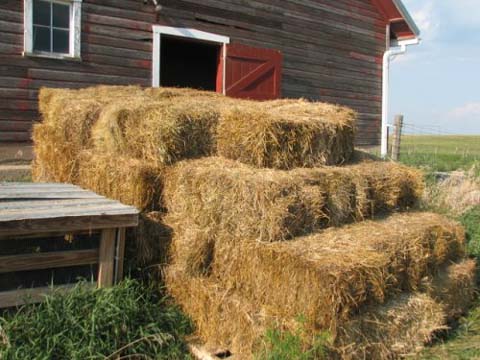
From BEEF Cow-Calf Weekly
— Bruce Anderson, University of Nebraska Extension forage specialist
No matter how hard you try, eventually you have mold in some of your hay and need to decide about feeding it, says Bruce Anderson, University of Nebraska Extension forage specialist, who adds that common sense and good observation often are your best decision aids.
Usually, mold makes hay less palatable, which can result in lower intake or total refusal by animals. In addition, many other problems from mold occur because of mycotoxins produced by certain mold fungi, though not all molds produce mycotoxins and the amount produced by those that do is unpredictable.
Direct negative effects of moldy hay are difficult to document, he says.
Horses may be the most sensitive to mold among common livestock. For instance, mold spores often contribute to respiratory and digestive problems like colic or heaves in horses.
Cattle apparently are less affected by mold, but certain molds can cause mycotic abortions or aspergillosis.
People, too, can be affected by mold spores. Mold can cause a condition called farmer’s lung, where the fungus actually grows in lung tissue. So try to avoid breathing in many of these spores.
The best course of action often is to minimize feeding moldy hay to more sensitive animals, like horses or pregnant cows. This may require a keen eye or sensitive nose when selecting hay to feed each day.
“In addition, mixing moldy hay with other feedstuffs can sometimes dilute problems, but be careful that you don’t make your animals sick by tricking them into eating bad hay that they normally would refuse,” Anderson says.
